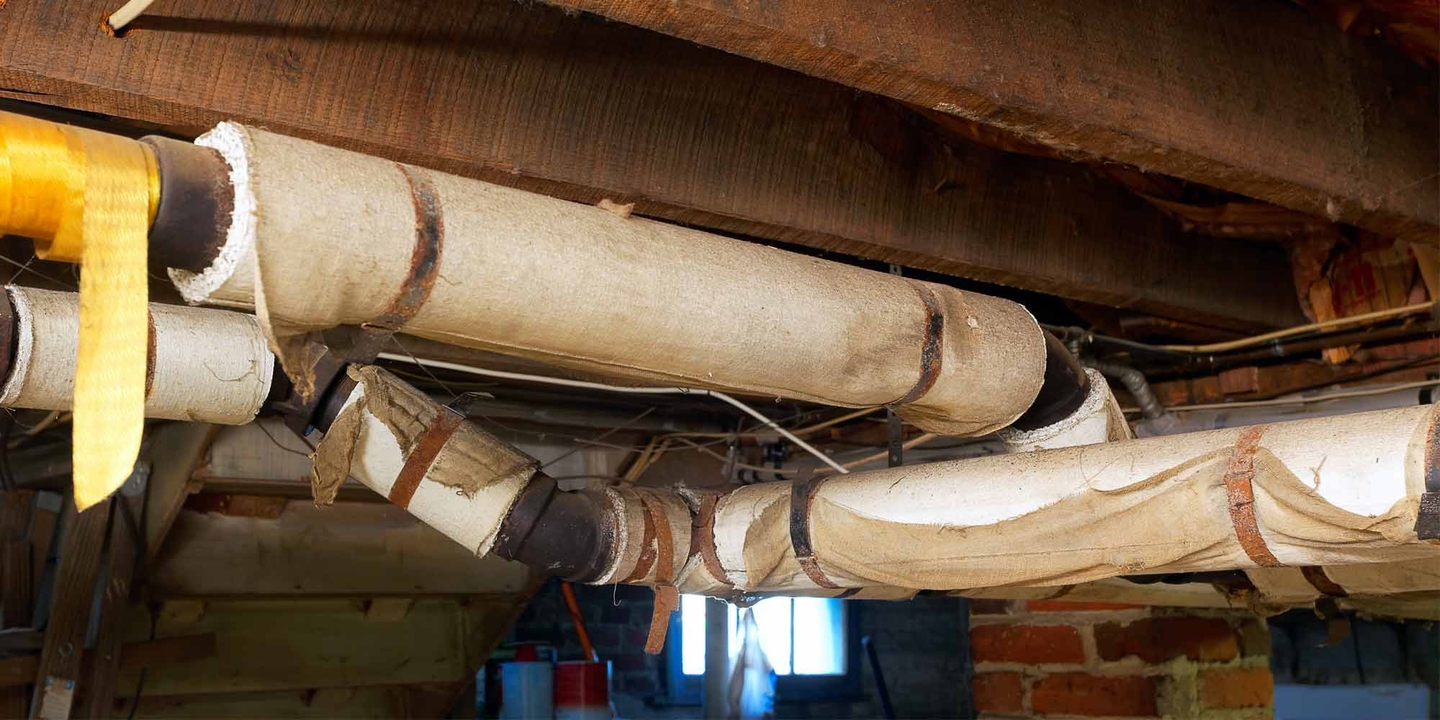How to test for asbestos in your home
3 min read
It’s almost impossible to determine whether your home contains asbestos without testing it. Many states strictly regulate home asbestos testing; trying to remove it yourself is hazardous. If your home was built before 1980, you might have asbestos in your insulation, vinyl flooring, or roofing. It’s important to be aware of safety concerns in your older home. Environmental consultants and contractors are two types of licensed professionals who help homeowners deal with asbestos testing and removal.
What is asbestos, and why is it dangerous?
Asbestos is a mineral fiber used in various home-building materials from the 1940s through the 1970s. It served as a fire retardant and heat and acoustic insulator. Unfortunately, it’s also highly toxic. Inhalation of asbestos fibers can lead to cancer of the lungs and stomach.
“In 1978, asbestos was banned from use in construction of any kind of building materials, but it took several years after that to remove those building materials from the pipeline of construction,” says Brent Morgenstern, a senior sales estimator at DEC-TAM (an Alloy Group Company) in North Reading, Mass. “So basically, what the federal regulations indicate is that any building built prior has to be inspected for asbestos prior to any renovation or demolition.”
Where is asbestos found in old homes?
According to the Environmental Protection Agency, here are examples of where you may find asbestos in older homes.
- Vermiculite attic and wall insulation
- Insulation, coating, coverings, or tape on hot water and steam pipes
- Insulation on oil and coal furnaces and any door gaskets
- Asbestos paper, millboard, or cement sheets on walls and floors near wood-burning stoves
- Vinyl floor tiles and sheet flooring, plus adhesives for these
- Certain wall patching compounds and textured paints
- Roofing and siding shingles
How to tell if your home has asbestos
Generally speaking, if an item containing asbestos is in good, undamaged condition, it can be left alone. If it’s damaged, or if you’re planning renovations or anything that may disturb it, you’ll want to have it removed. It’s important to understand whether your homeowners insurance covers asbestos removal. It likely won’t — unless it sustained damage due to a covered peril.
As for how to test for asbestos yourself, only some states allow homeowners to perform a home asbestos test. Check with your state’s environmental agency or health department first. If they allow it, you’ll be able to purchase a kit with instructions on how to test for asbestos in the air. If you’re unable to test for asbestos yourself, or if you come up with a positive result — it’s unwise to perform any repair or removal yourself. Because of the danger that asbestos fibers present, rather than learning how to identify asbestos in your home, it’s best to work with licensed professionals to identify and remove any asbestos in your home.
How to get professional help for home asbestos testing
Environmental consultants and contractors detect and remove asbestos, respectively. “The initial step for any homeowner would be to have an environmental consulting company, or industrial hygienist, perform a building survey or building inspection,” says Morgenstern. “They’re trained in the identification and collection of samples, which they submit to offsite laboratories for analysis, and then provide a report to an environmental contractor.” Learn more about home inspection and why it’s essential.
The environmental contractor then performs the removal. Using an example of asbestos insulation on a boiler and hot water pipes, Morgenstern provides a high-level overview of the process. “You establish a containment by sealing the doors, windows, and vents with plastic sheeting. That containment regulates the work environment, and you filter the air using high efficiency, particulate air filters, creating a negative air pressure within the containment.” That means that anytime someone goes into the containment space, air flows into the containment space — air doesn’t flow out, which prevents any asbestos fibers from escaping.
Next, Morgenstern explains, “We set up a decontamination facility for workers to change into Tyvek suits. Then they go into the workspace, and they wet the asbestos insulation down, bag the material up, and remove it. And that waste is properly packaged and labeled for disposal and landfills. Once we finish our work, then the industrial hygienist comes back, does a visual inspection, and then conducts air testing inside the containment.” Once those samples are analyzed and come back clear, the contractors remove the containment system.




